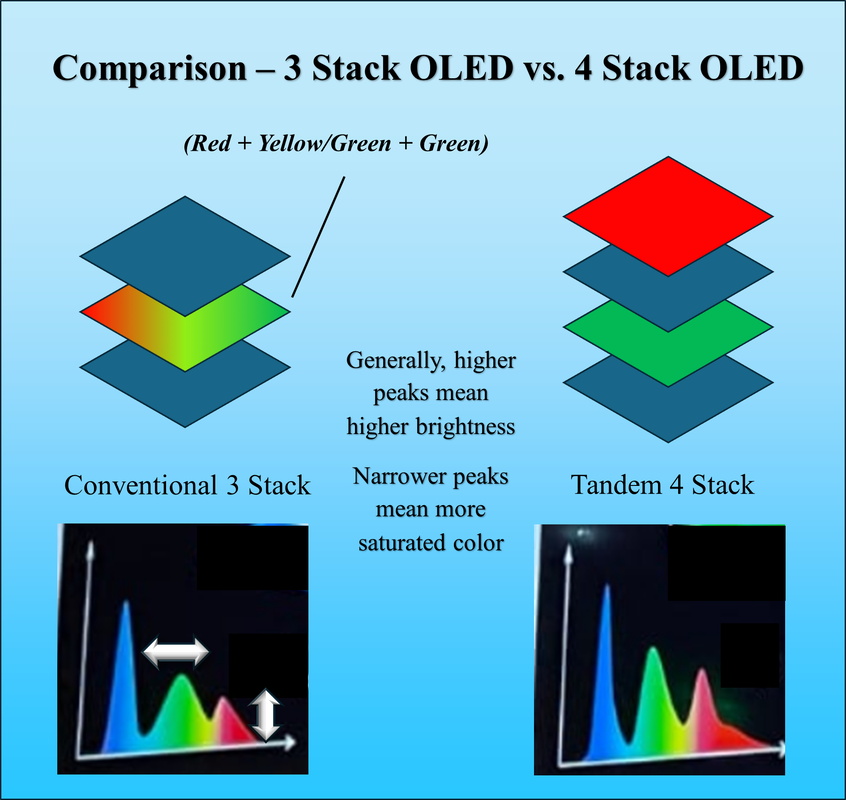Stacking the Deck
We note that while the stack comparison simplifies the structure of the OLED displays to make them easier to understand, the complexity of these displays is considerable and the precise nature of the control necessary to produce each layer is quite daunting, as the layers are typically between 10nm and 80nm thick, depending on the type of layer and the material chosen. We also note that stack engineers and scientists have a large number of materials to choose from for each layer, making the number of possible combinations astronomical. As an example, below is a list of some of the materials that can be used for just the Hole Injection layer (you can’t get these at the local pharmacy), so it can be seen that with eight structural layer types and 17 layers, even this generic 3-stack model is incredibly complex. Even limiting the number of choices to 5 materials for each structure, the number of possible combinations are over 390,000 and there are typically many more than 5 choices of materials for each structure. While the layer-by-layer details for a 4-stack panel have not been disclosed by LG Display, we expect at least 5 more layers will be needed, adding to process time and cost.
MTDATA - 4,4',4''-Tris(N-carbazolyl)-triphenylamine
CuPc - Copper (II) phthalocyanine
TCTA - 4,4',4''-Tris(carbazol-9-yl) triphenylamine
HATCN - 2-(4-Biphenylyl)-5-(4-tert-butylphenyl)-1,3,4-oxadiazole
TDAPB - 4,4'-bis[N-(1-naphthyl)-N-phenylamino] biphenyl
PEDOT: PSS - Poly(3,4-ethylenedioxythiophene):poly(styrene sulfonate)
Panasonic (6752.JP) is the first TV brand to be using these new panels, and while they have not explicitly stated that the panels are from LG Display, it would be hard to imagine otherwise, but the company has not indicated when the three sizes (55”, 65”, 77”) will be released, other than some time in 2025, nor have they given price information, but we trust they are coming this year. LG (066730.KS) has stated that their 2025 G5 OLED TV line will contain “Brightness Booster Ultimate” technology, and while they have not explicitly stated that those sets would be using the 4-stack OLED panels, we make the same assumption. That said, LG’s G3 line contains 48”, 55”, 65”, 77”, 83”, and 97” models, so it is possible that some might not use the 4-stack panels this year.
Again, while this might seem a small matter to those outside of the display space, it will push forward the quality of OLED displays and intensify the competition between OLED and LCD (Mini-LED in particular). Large panel OLED displays have been criticized for not being as bright as LCDs, so any increase in brightness increases the value of large panel OLED displays, making them a better choice for brands going forward. Hopefully, the actuality of the 4-stack approach meets the promotion it will get in the TV space, especially with consumers later this year, making the added manufacturing cost worthwhile.
[1] Color volume is a measure of the display’s ability to reproduce a wide range of colors at various brightness levels, essentially a combination of hue (color), saturation (how much white is mixed in) and brightness (luminence), which is the intensity of the color.


 RSS Feed
RSS Feed